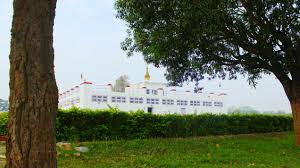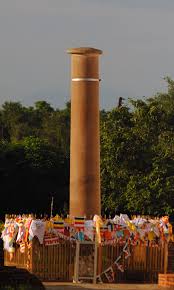Right beside the Maya Devi Temple, lies the Pillar which was built by Emperor Ashoka of India during 249 BC. It is also known as Ashoka Pillar. This pillar has the inscription that describes the importance of Lumbini as the birthplace of Lord Buddha. This pillar holds very important historical significance as it is proof that Buddha was born in the Lumbini rather than in India. It is trusted that this Pillar was worked amid 249 BC when Emperor Ashoka of India went by the then thriving town of Lumbini. He constructed four stupas and a Pillar with a stallion icon at the best and an engraving that portrays his visit and the significance of Lumbini as the origination of Lord Buddha.
The column is encompassed by a little fence, enriched with vivid supplication banners and furthermore has dishes to light incense sticks and contemplate. This column holds a recorded hugeness and it is thought to be one of the significant attractions of Lumbini. The Ashok Pillar; found by the now-well known German classicist Dr. Further, the column is the principal epigraphic confirm identifying with the life history of Lord Buddha and is additionally the most noticeable point of interest of the favorable garden. The memorable significance of the column is proving by the engraving engraved on the column (in Brahmi characters). It is said that the Hindu Indian Emperor Ashok-the Great, who got changed over, went to the site in the twentieth year of his increase to the honored position and as the tribute to the unadulterated origination raised the column.
Myanmar Golden Temple

Myanmar Golden Temple is the oldest structure around the Lumbini area. This temple has three prayer halls. Inside the temple, there is the Lokamani Pula Pagoda which is a Burmese-style Pagoda that resembles the Shwe-Dagon Pagoda of Yangon. This golden temple was made by the Myanmar government in the Lumbini area. One of the most established structures on the premises with three supplication lobbies is the Myanmar brilliant sanctuary. Appropriate inside the sanctuary premises is the Lokamani Pula pagoda, another Burmese style pagoda that takes after the Shwedagon Pagoda of Yangon. This site is beautiful to the point that you will be astonished and won’t let your eyes off this Temple.
World Peace Pagoda
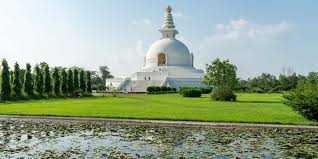
The World Peace Pagoda is probably the most beautiful pagoda in the Lumbini area. Built at the cost of over one million US dollar by the Japanese, it is a shiny white structure with the golden statue of the Lord Buddha. Though peace pagoda is not in the Lumbini world heritage site area, this landmark is equally famous as any other monasteries inside the Lumbini area. This pagoda was worked by the Japanese at the cost of US $ 1 million, simply outside the fundamental region. The pagoda has the statue of Lord Buddha in the position he took when he was conceived. It is a glimmering white structure with a brilliant statue. It is one of the rising attractions of Lumbini.
Dharma swami Maharaja Buddha Vihar
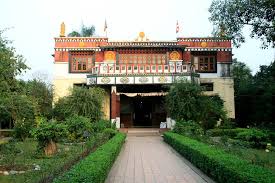
This Vihar is Tibetan styled Gompa which is right outside the complex. This Vihar was built by the Raja of Mustang and Eminence ChogyaTrichenRinboche. In this Vihar, a puja is conducted every single day by around sixty monks who reside. This Vihar is one of the landmarks of the Lumbini world heritage site. This Tibetan styled Gompa outside the complex was worked by His Eminence Chogya Trichen Ringboche and Raja of Mustang where Tara Puja is led each day by the 60 priests who dwell there.
Mayadevi Pond

Located right in front of the Maya Devi temple in Lumbini, Maya Devi Pond is quite a simple yet attractive square shaped structure with steps all around to ascend to the water level. Also known as Puskarini, this is where Gautama Buddha's mother - Maya Devi - used to bathe. In fact, Lord Buddha was also bathed in the pristine waters of the pond after his birth. A grand temple now takes the location where Buddha was born and the Maya Devi pond is located right in front of the shrine.
China Temple
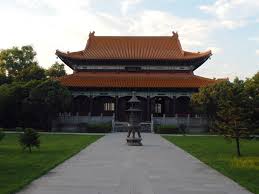
China temple is a huge complex with lots of prayer rooms, meditation cells, and pagodas. This elegant monastery is very much impressive structure because of its style and uniqueness. Arriving at this monastery through various other monasteries, this monastery looks something out of the Forbidden City. It is a complex of pagodas, petition rooms, and reflection cells. Alternate sanctuaries and religious communities incorporate the Korean sanctuary, others worked by Vietnam, Thailand, Mongolia, Germany, Sri Lanka, and different nations. This site is beautiful to the point that you will be astonished and won’t let your eyes off this Temple.
Lumbini Museum

Lumbini Museum on the northern end of the premise is dedicated to the life of Gautam Buddha and houses the photos and artifacts from Buddhist sites all over the world.
Cambodian Monastery
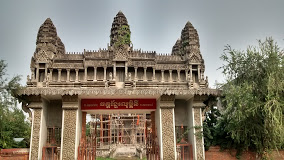
Cambodian Monastery in Lumbini is an amalgamation of colorful fantasy and spiritual forces making it one of the most fascinating temples in the region. Built in a architectural design matching the famous Angkor Wat, the charming monastery is surrounded by a square railing.
Royal Thai Monastery
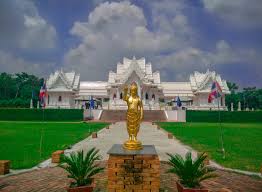
Royal Thai Monastery in Lumbini is an imposing and stunning wat-style monastery dedicated to Buddhist practises. The gleaming building is constructed from white marble and the blue-roofed meditation center are example of a fine architectural style.
Korean Temple
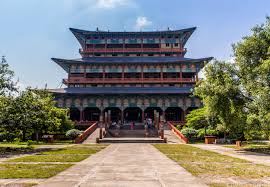
Dae-Sung-Shakya-Sa, popularly known as the Korean Temple, is a Buddhist Monastery in Lumbini. The impressive structure is built in a Korean style of architectural. The building is oriental and huge and even offers accommodations to visitors for a few days.
Sri Lankan Monastery

The monastery is a beautiful Buddhist establishments that gives insights into the life of Gautama Buddha and its importance in the region. Dean Koontz once famously stated that living in a monastery, even as a guest, opens up more opportunities.
Bodhi tree
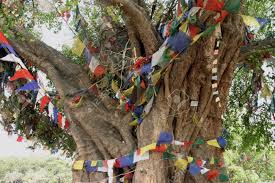
The Bodhi Tree in Lumbini is located in the divine premises of the Maya Devi Temple complex right next to the vibrant shrine on the banks of the serene Maya Devi Pond. It is considered highly sacred in the region and worshipped with great devotion. One may visit the tree after exploring the temple before maybe sitting by the pond admiring the tranquillity of the site. The tree is an age-old Peepal tree or Ficus Religiosa and is quite a pleasant sight as it stands firm on the ground covered with several colored flags.
